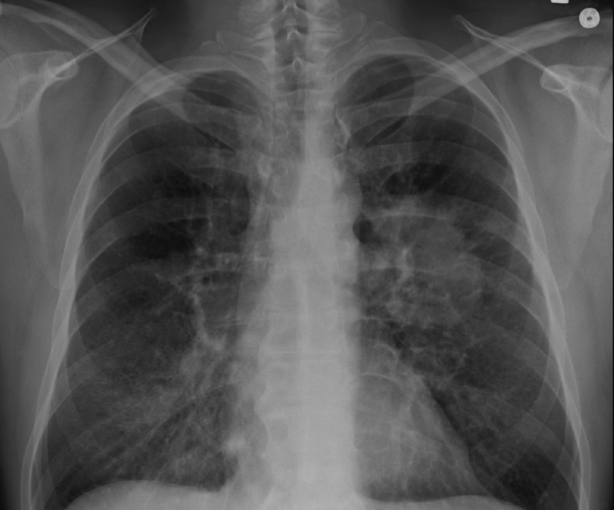Lung diseases are one of the leading causes of death and disability in the world. One of the reasons why is that lungs are difficult to exam. Of course, we have x-Ray technology, ultrasound, biopsies and other methods to exam lung tissue, but they are not always sufficient. Now scientists from the Universities of Edinburgh and Bath and Heriot-Watt University created a new probe, which could significantly improve examination of lung diseases. You won’t believe how tiny it is!

There is not much room in the lungs, which requires a very tiny probe – only a probe about as thick as a human hair works. Image credit: James Heilman, MD via Wikimedia (CC BY-SA 4.0)
There are many medical probes that can be used to research different parts of the body. However, they are relatively bulky in size. There is no wiggle room at all – we don’t have probes small enough to actually see what is going on. Or at least didn’t have until now, because scientists have developed a probe, which is just 0.2mm in diameter and still is able to hold 19 sensors. Of course, even though it is made from optical fibre, you cannot actually see the tissue damage, but at least doctors will be able to detect key indicators of it.
Scientists say that this hair-sized probe with it array of sensors is able to pick up tiny changes in tissue health. It is going to be especially useful in assessing patients that are on ventilators in intensive care. These patients are typically difficult to assess due to the need to move them and work around the equipment. This new probe is tiny enough to circumvent these challenges.
Each of 14 sensors of the probe can measure different indicators in tissues. These include acidity and oxygen levels – key indicators, providing information about the progression of the disease and body’s reaction to it. The way this probe is designed, in the future it will be possible to add more sensors to take all kinds of different measurements. Furthermore, although this technology was created having in mind lungs, the probe could be used on other parts of the body just as well.
Dr Michael Tanner, one of the authors of the study, said: “These new methods, if taken to clinic, will lead to novel insights in disease biology. Our aim now is to expand the number of unique sensors on this miniaturised platform to provide even more information”.
Lung diseases are common and deadly. Science is making huge leaps both in diagnosis and in therapy. But doctors still need better tools to closely research the condition. Hopefully this probe will pass its trials well and will become an easily available tool for doctors around the world.
Source: University of Edinburgh


